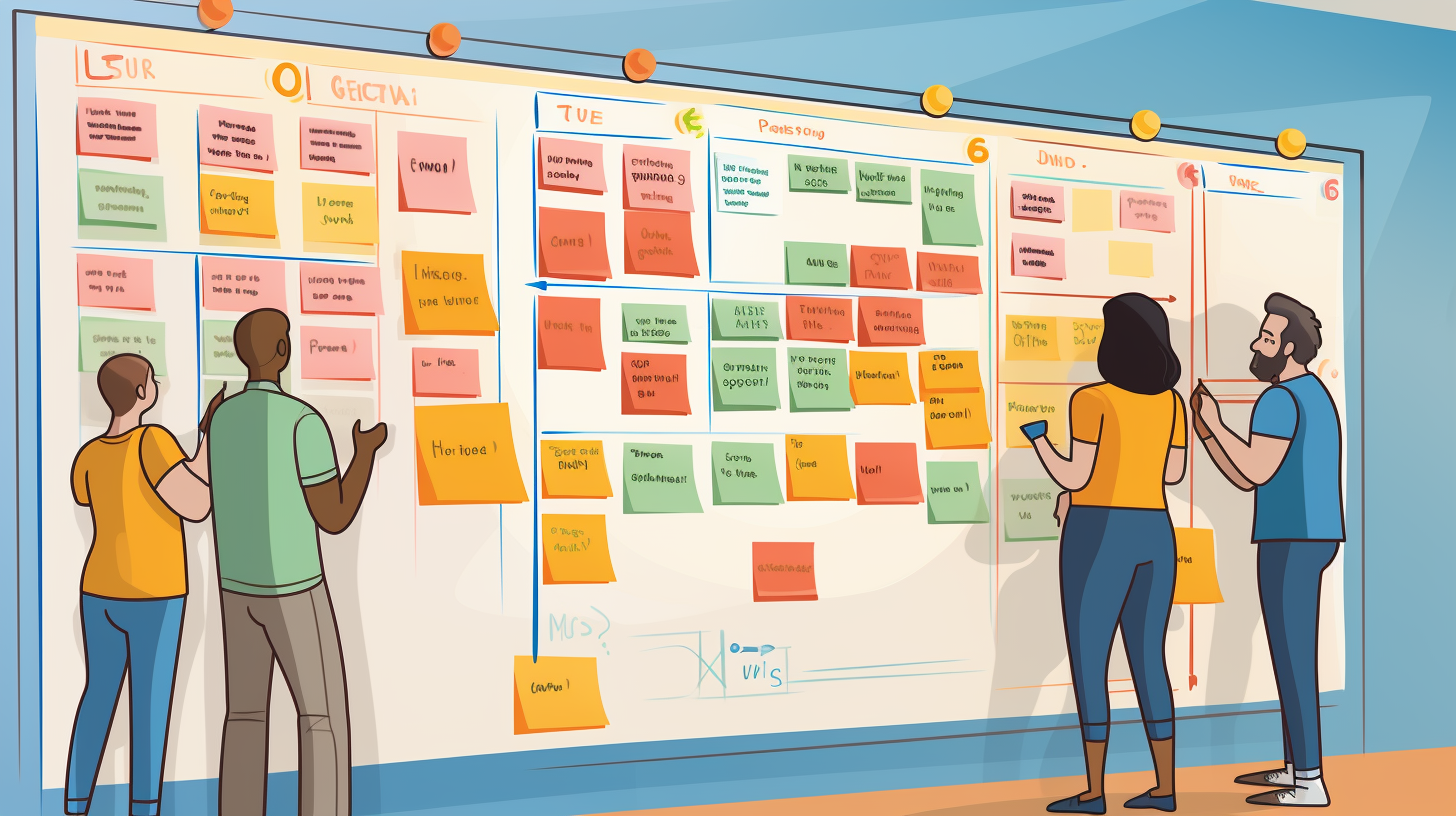
Scrum Guide 2023 – The Scrum Guide is an evolving framework, and it invites contributions from Scrum practitioners who derive value from its principles. As an active member of the Scrum community who benefits from Scrum, I take this opportunity to offer my suggestions and ideas for the forthcoming revision of the Scrum Guide. These proposals are intended for public discussion on social media and scrum.org, presented in a backlog-like format, organized by priority and importance rather than their sequence in the Scrum Guide. Each proposal stands independently and should be evaluated as such.
Some propositions for the Scrum Guide 2023
In the next version of the Scrum Guide 2023, the notions of “Manager” and “Customer” could you be inserted :
The 2023 #Scrum Guide is going to introduce two new Scrum accountabilities. Based on the suggestion by @borisgloger, @kschwaber and @jeffsutherland are going to introduce “Customer” and “Manager”. @DasScrumTeam Product Owner @CurlyPeter is glad: “I can be so much more now!”
— Andreas Schliep 🇺🇦 (@andreasschliep) April 1, 2023
Proposal 1: Modification of the “Purpose of the Scrum Guide” Paragraph
Suggested Change: Eliminate the sentence, “Changing the core design or ideas of Scrum, leaving out elements, or not following the rules of Scrum, covers up problems and limits the benefits of Scrum, potentially even rendering it useless.”
Objective: Ensure the Scrum Guide does not hinder experimentation and allows for transparent inspection and adaptation of Scrum itself.
Rationale: The warning against altering the core design of Scrum lacks empirical evidence. This warning can stifle experimentation and impede practitioners from openly inspecting and adapting the framework. Many Scrum practitioners have reported positive results from modifying the Scrum design.
Proposal 2: Revision of the “Product Owner” Section
Suggested Change: Replace “Those wanting to change the Product Backlog can do so by trying to convince the Product Owner” with “Anyone can add items to the product backlog. The Product Owner can decide to keep or remove any items in the Product Backlog.”
Objective: Allow for contributions to the Product Backlog from anyone.
Rationale: Introducing barriers to input in the Product Backlog can limit transparency and stakeholder feedback, potentially causing vital information for the Scrum team, product, or its increments to be lost. Once information reaches the Product Backlog, the Product Owner can decide to keep or remove it.
Proposal 3: Modification of the “Scrum Theory” Section
Suggested Change: Revise the sentence “Scrum is founded on empiricism and lean thinking. Empiricism asserts that knowledge comes from experience and making decisions based on what is observed. Lean thinking reduces waste and focuses on the essentials” with “Scrum is founded on empiricism, lean thinking, and the free flow of information. Empiricism asserts that knowledge comes from experience and making decisions based on what is observed. Lean thinking reduces waste and focuses on the essentials. The free flow of information ensures access to the collective database of human knowledge.”
Objective: Adapt Scrum to the emerging AI industry and other open source databases.
Rationale: This adaptation aligns Scrum with the concept of a collective database of human knowledge, as described by the AS IF concept. It acknowledges that information is tangible rather than abstract.
For more details, please refer to source link.
Proposal 4: Enhancement of the “Product Backlog,” Commitment “Product Goal” Section
Suggested Addition: Include the phrase “The value of the product shall be monetary or other, depending on the purpose of the product, product goal, and strategic goal of the organization. The metrics of this value are established jointly by the Scrum team, the Organization, and the end users of the product.”
Objective: Provide clarity on the nature of the value associated with the product.
Rationale: The Scrum Guide mentions “the value” 25 times without specifying the metrics of this value. This omission leads to confusion among practitioners and stakeholders regarding the nature of the value they deliver, potentially affecting product backlog prioritization, sprint goals, and evidence-based management.
Proposal 5: Clarification of the “Scrum Team” Section
Suggested Addition: “The Scrum team exists within an organization that supports, funds, and protects it. The Scrum team creates products and generates value on behalf of the organization. The organization may vary in size, ranging from a larger entity to the Scrum team itself.”
Objective: Provide clarity about the concept of the organization within the Scrum framework.
Rationale: The term “organization” is referenced 11 times in the Scrum Guide without a defined explanation of what it constitutes or its relationship with the Scrum team.
Proposal 6: Insertion of a Statement in “The Sprint” Section
Suggested Addition: “The forecasts shall not be used as metrics to measure teams’ performance.”
After the phrase: “Various practices exist to forecast progress, like burn-downs, burn-ups, or cumulative flows.”
Objective: Prevent the misuse of velocity as a performance metric.
Rationale: Numerous Scrum practitioners have expressed concerns about the improper application of velocity estimates, especially in the context of “story points.” These concerns have been widely discussed on social media and within the Scrum community.
These proposed amendments are intended to foster discussion and enhance the Scrum Guide by addressing areas of potential improvement and adaptation based on the evolving needs and insights of Scrum practitioners.

Be the first to comment